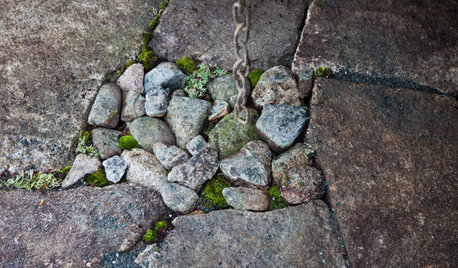Rare for a Reason
runktrun
17 years ago
Related Stories

ARTShow News: Rare Quilts Get Museum Time
See 6 intricate designs from a California exhibition and get tips for building your own quilt collection
Full Story
HOUZZ TOURSRare Modernist Home Uncovered in Palm Springs
A custom home by modernist William Krisel gets restored and updated
Full Story
FALL GARDENING7 Reasons Not to Clean Up Your Fall Garden
Before you pluck and rake, consider wildlife, the health of your plants and your own right to relax
Full Story
LANDSCAPE DESIGN5 Reasons to Consider a Landscape Design-Build Firm for Your Project
Hiring one company to do both design and construction can simplify the process. Here are pros and cons for deciding if it's right for you
Full Story
MOST POPULAR9 Reasons to Buy a Painting
No print or poster can rival the power of an original painting, chosen by you, for where you live
Full Story
FURNITURE10 Reasons to Love Big, Comfy Sectionals
With their soft lines, visual heft and casual versatility, modular sofas are a great choice for many rooms
Full Story
DECORATING GUIDES10 Reasons to Try a Moroccan Rug
Unbelievably plush and durable, these carpets are a design obsession with good cause
Full Story
REMODELING GUIDES11 Reasons to Love Wall-to-Wall Carpeting Again
Is it time to kick the hard stuff? Your feet, wallet and downstairs neighbors may be nodding
Full Story
PATIOSLandscape Paving 101: Some Reasons to Go for Granite
Thinking about a new patio or path? Invest in granite for its durability and low maintenance
Full Story
MOST POPULAR11 Reasons to Paint Your Interior Doors Black
Brush on some ebony paint and turn a dull doorway into a model of drop-dead sophistication
Full Story






triciae
ego45
Related Professionals
West Milford Landscape Architects & Landscape Designers · Clermont Landscape Contractors · Alamo Landscape Contractors · Azalea Park Landscape Contractors · Brownsville Landscape Contractors · Concord Landscape Contractors · New Providence Landscape Contractors · Nutley Landscape Contractors · San Pablo Landscape Contractors · Ankeny Decks, Patios & Outdoor Enclosures · Chandler Decks, Patios & Outdoor Enclosures · Del Aire Decks, Patios & Outdoor Enclosures · Littleton Decks, Patios & Outdoor Enclosures · Montgomery County Decks, Patios & Outdoor Enclosures · Wildomar Decks, Patios & Outdoor Enclosuresheirloomamy
diggingthedirt
runktrunOriginal Author
asarum
runktrunOriginal Author
asarum
runktrunOriginal Author
schenley
Sue W (CT zone 6a)
martieinct
jackied164 z6 MA
evonnestoryteller